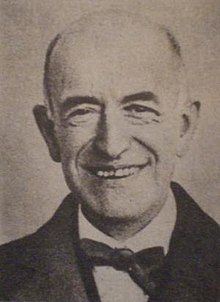|
La vida breve (opera)
La vida breve (Spanish Life is Short or The Brief Life) is an opera in two acts and four scenes by Manuel de Falla to an original libretto by Carlos Fernández-Shaw. The opera being set in Granada, Andalusian Spanish is used. The opera was written between August 1904 and March 1905 in Spain, but Falla was not at first able to get it staged there, and he continued to work on the score after moving to France. The first performance was given (in a French translation by Paul Millet) at the Casino Municipal in Nice on 1 April 1913.[1] Paris and Madrid performances followed, later in 1913 and in 1914 respectively. Claude Debussy played a major role in influencing Falla to transform it from the number opera it was at its Nice premiere to an opera with a more continuous musical texture and more mature orchestration. This revision was first heard at the Paris premiere at the Opéra-Comique in December 1913, and is the standard version. Only an hour long, the opera is usually paired with another work in performance. For example, the English opera company Opera North gave an opportunity for it to be heard alongside Zemlinsky's Der Zwerg or Puccini's Il tabarro when they included among the short operas ('Eight Little Greats') which were performed in their 2003/2004 season.[2][3] The complete opera is seldom performed today, even though its importance in the context of opera in Spanish is recognised and it was programmed for the reopening of the Teatro Real in 1997. However, its orchestral sections are often performed, especially the act 2 music published as Interlude and Dance, which is popular at concerts of Spanish music. (Fritz Kreisler in 1926 arranged for violin and piano the dance from this pairing under the spurious title Danse espagnole.) Indeed the opera is unusual for having nearly as much instrumental music as vocal: act 1, scene 2 consists entirely of a short symphonic poem (with distant voices) called Intermedio, depicting sunset in Granada; act 2, Scene 1 includes the above-referenced Danza and Interludio, with the latter ending the scene, i.e. in the opposite sequence to the excerpted pairing; and act 2, scene 2 begins with the a second and longer Danza (with vocal punctuation). The role of Salud is central to the action. It has been sung by, among others, soprano Victoria de los Ángeles, mezzo-soprano Teresa Berganza, mezzo Martha Senn, and, more recently, sopranos Cristina Gallardo-Domâs and Mary Plazas.[2] Roles
Synopsis
Act 1Afternoon and sunset in the (gypsy) Albaicín district A male chorus of anvil workers plies their trade at the local forge. The young gypsy, Salud, is passionately in love with a young well-to-do man named Paco. She does not know, and Paco does not tell her, that he is already engaged to a woman of his social class. Her uncle, Sarvaor (Salvador), and her grandmother (La abuela) have discovered this, and they try to prevent Salud from interrupting Paco's wedding after she learns the truth. Act 2A wealthier part of the city: in front of a house on whose patio wedding festivities are in progress (and visible from the street), and then in the patio itself Confrontation (which from several perspectives is the theme of the whole opera) occurs after Salud and Sarvaor gate-crash the festivities, astonishing the bride and the guests and momentarily throwing the mendacious groom so much off his guard that he utters Salud's name before denying he knows her and ordering her ejection. Her heart broken, Salud falls dead at his feet, in what is said to be the ultimate gesture of contempt for a former lover.[6][7] RecordingsThere are 11 complete recordings, as of February 2012. Cast key is Conductor / Salud, La abuela, Paco, El tío Sarvaor:
References
External links
|
||||||||||||||||||||||||||||||||||||||||||||||||||
